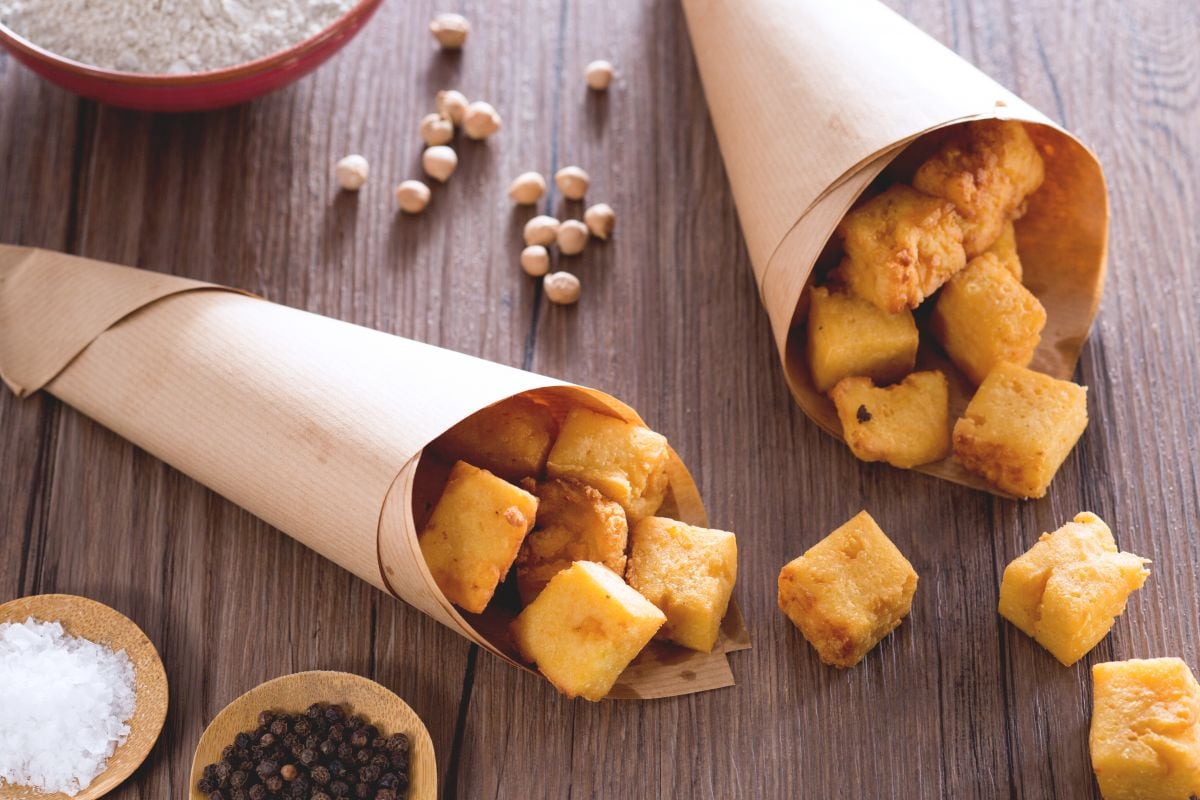Potato Gnocchi Without Flour
- Average
- 1 h 50 min
- Kcal 142

If you find yourself in Piedmont, specifically in the Vercelli area, and ask for a "panissa," they will serve you their typical risotto with beans and pork rind; but in Liguria, ordering panissa means you will enjoy a delicious snack to nibble on as a street food appetizer, a recipe that revives the culinary tradition of old-time fry shops. Today we have chosen to present you with our version of the Ligurian panissa, which, like all respected street foods (focaccia, Recco focaccia, sardenaira), is best tasted while strolling through the most characteristic alleys of the city and villages. Incredibly tasty, Ligurian panissa is similar in taste to chickpea farinata, as it is made with chickpea flour and water (without adding oil to the dough), and is consumed cold or fried, as we present it to you in crunchy bites! A dish as humble as it is good, it has always won hearts with its simple and genuine taste, its intense and unmistakable aroma that keeps its promises on the palate. Like many traditional dishes, Ligurian panissa began as a frugal but substantial meal and has become a tasty treat in modern times.
Discover other traditional recipes from this region, such as brandacujun or the classic Ligurian polpettone.

To make Ligurian panissa, start by sifting the chickpea flour into a large bowl 1, then add the salt, adjust with pepper, and gradually pour in the water while stirring the flour with a whisk to avoid the formation of lumps (2-3).

Once you have poured in all the water and the mixture is homogeneous, transfer it to a saucepan 4 (ideally, panissa should be cooked in a copper pot, but a steel one will also do). Cook the mixture over very low heat, stirring constantly with the whisk until you get a firmer dough. At this point, replace the whisk with a wooden spoon 5 and continue stirring until the mixture separates from the sides 6, which will take about 80 minutes of cooking.

When cooking is finished, oil a rectangular mold 7 of 9x4 inches (like a loaf pan) and pour the cooked mixture inside 8, press it down, and level the surface with the back of a spoon 9.

When the mixture has cooled, cover the mold with plastic wrap 10 and let it set in the refrigerator for about 2 hours. After the resting time, turn the mold over onto a cutting board 11, remove the panissa that should be well compacted and cut it first into slices 12

and then into cubes of about 1 inch 13. At this point, you can move on to frying: heat the seed oil in a pot, and when it reaches 340°F, immerse the panissa cubes 14 for about 5 minutes or until they are golden. Drain the fried panissa with a slotted spoon 15

and transfer it to a tray lined with paper towels to absorb the excess oil (16-17). Serve the Ligurian panissa hot 18.